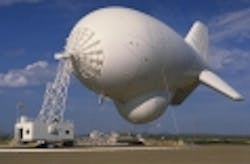Real-time submarine communications at speed and depth takes another step toward deployment
MARION, Mass., 13 July 2010.Submarine communications experts at Lockheed Martin Sippican Inc. in Marion, Mass., are taking another step toward enabling U.S. Navy submarines to communicate while submerged and underway without raising a periscope communications antenna above the surface and revealing the vessel's presence.
A team of Lockheed Martin (NYSE: LMT) Sippican, Ultra Electronics Ocean Systems in Braintree, Mass., and ERAPSCO -- a joint venture between Sparton Corp. Defense & Security Systems segment in DeLeon Springs, Fla., and Undersea Sensor Systems Inc. (USSI) in Columbia City, Ind. -- completed a critical design review for the Communications at Speed and Depth (CSD) program to enable submarines to communicate without proceeding to periscope depth.
Today's submarines must come to periscope depth to communicate with other ships, aircraft, or with shore facilities. The team will start producing CSD hardware and deliver engineering design models early next year. The system can be installed on all classes of submarines. Ballistic missile submarines can communicate extremely slowly with very low frequency (VLF) and extremely low frequency (ELF) communications systems that cannot communicate in real time.
"The CSD systems will keep submarines connected to the Global Information Grid far beneath the water's surface, helping submariners remain safe and hidden from enemy radars," says Rod Reints, Lockheed Martin's senior program manager for CSD. "Submarines are most vulnerable when they must surface to use communication systems. This program eliminates that vulnerability."
The Lockheed Martin-led team will deliver three types of two-way communications buoys and equipment for installation aboard submarines and ashore. Two tethered expendable communications buoy systems -- for Iridium satellite and ultra high frequency communications -- will be launched from submarines. The third is an acoustic-to-radio-frequency gateway system that can be launched from submarines and aircraft.
The $35 million contract for CSD buoys and testing was awarded to Lockheed Martin in January 2009. For more information contact Lockheed Martin Sippican online at www.sippican.com, Ultra Electronics Ocean Systems at www.ultra-os.com, Sparton Defense & Security Systems at www.sparton.com, or USSI at www.ultra-ussi.com.
